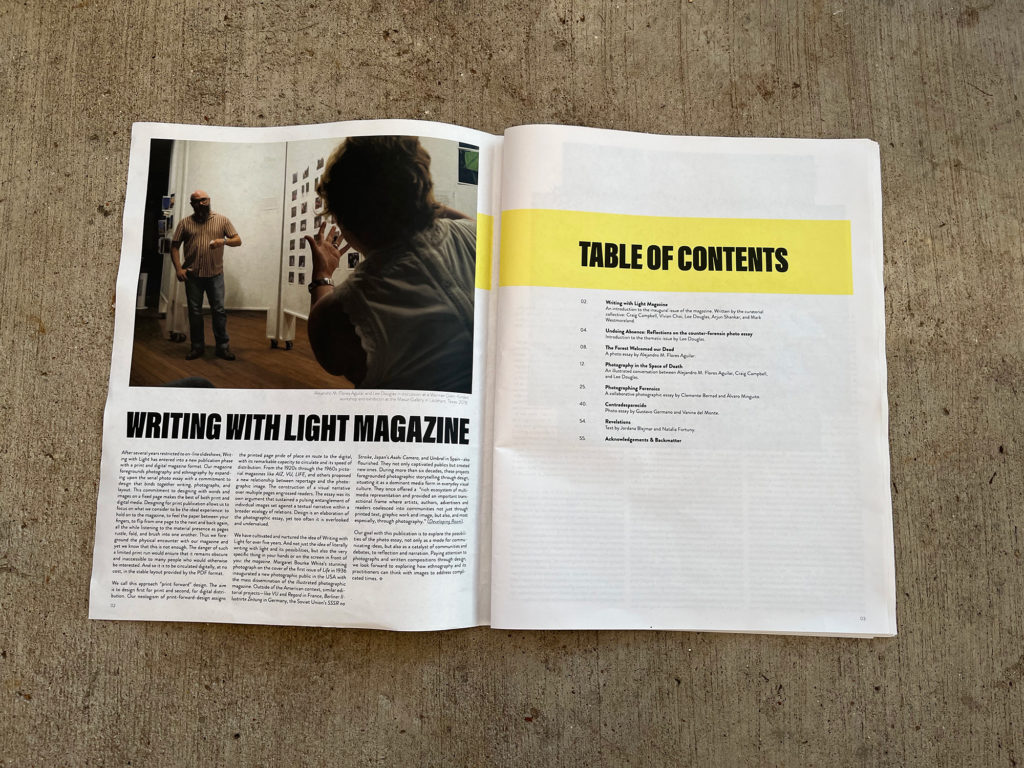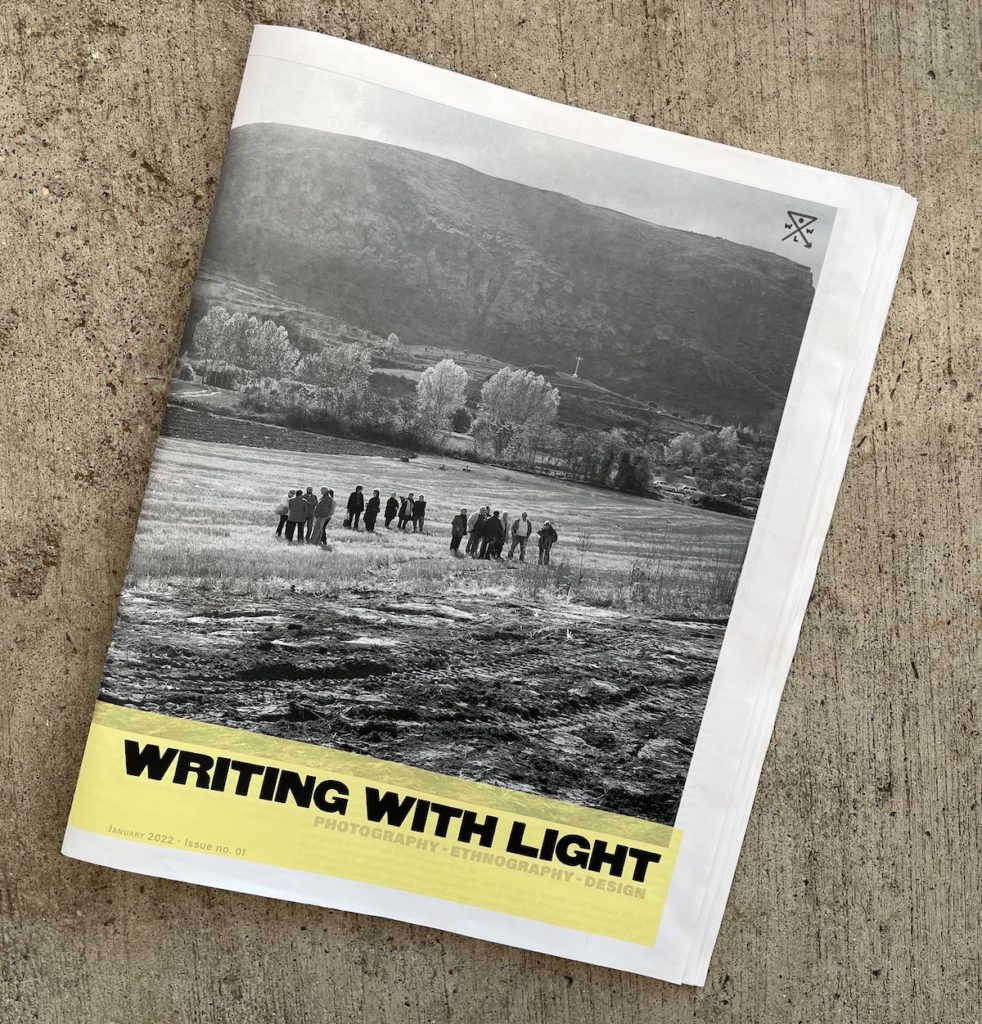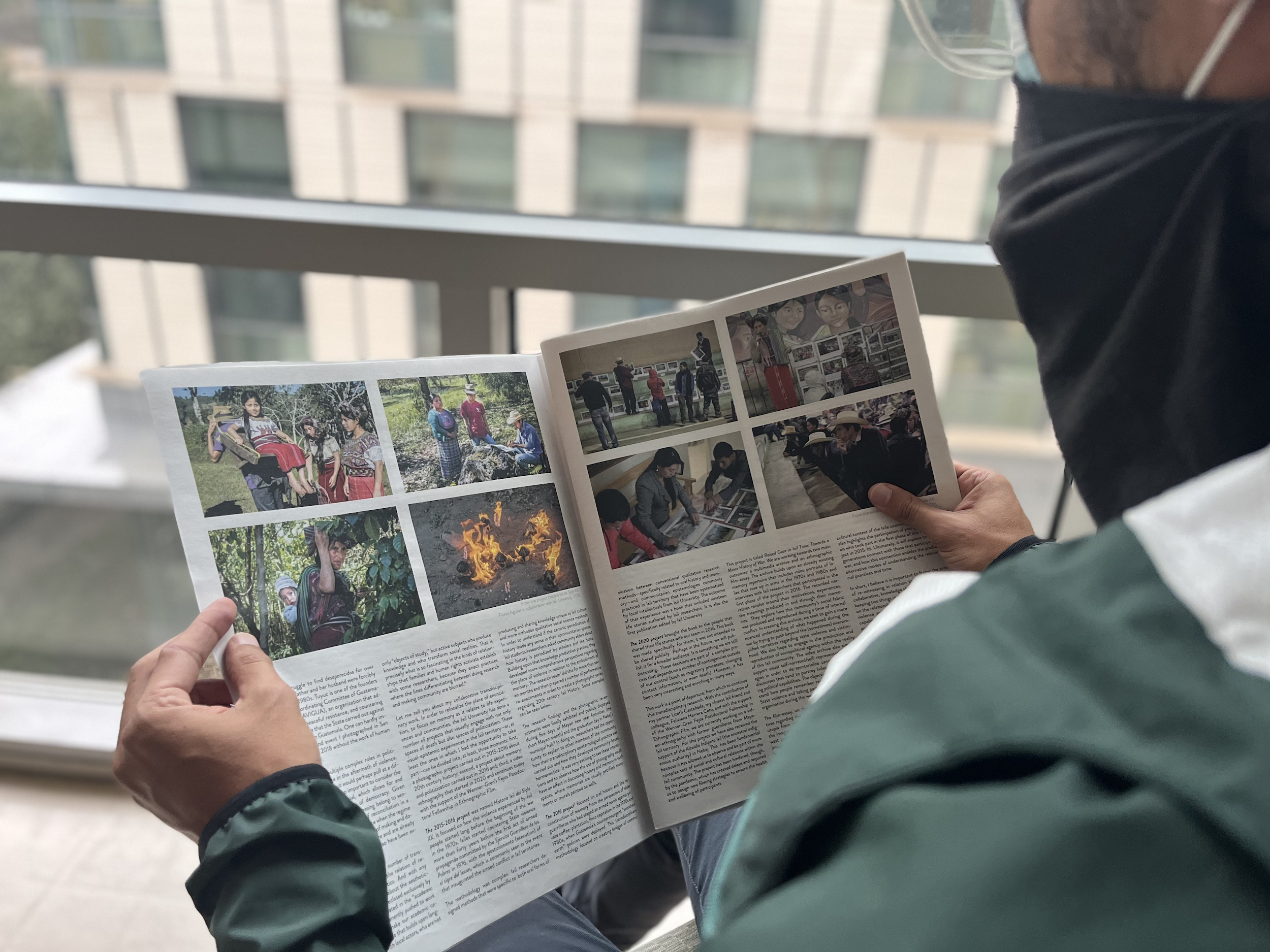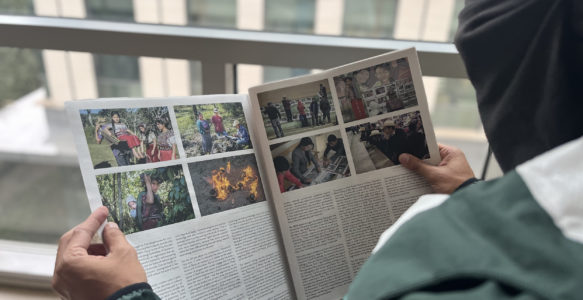Writing with Light magazine foregrounds photography and ethnography by expanding upon the serial photo essay with a commitment to design that binds together writing, photographs, and layout. This commitment to designing with words and images on a fixed page makes the best of both print and digital media. Designing for print publication allows us to focus on what we consider to be the ideal experience: to hold on to to the magazine, to feel the paper between your fingers, to flip from one page to the next and back again, all the while listening to the material presence as pages rustle, fold, and brush into one another. Thus we foreground the physical encounter with our magazine and yet we know that this is not enough. The danger of such a limited print run would ensure that it remains obscure and inaccessible to many people who would otherwise be interested. And so it is to be circulated digitally, at no cost, in the stable layout provided by the PDF format.
We call this approach “print forward” design. The aim is to design first for print and second, for digital distribution. Design is an elaboration of the photo essay. And too often it is an overlooked element of the photographic essay. Our neologism of print-forward-design assigns the printed page pride of place en route to the digital, with its remarkable capacity to circulate and its speed of distribution.
From 1920s through the 1960s, pictorial magazines like AIZ, VU, LIFE, and others proposed a new relationship between reportage and the photographic image. The construction of a visual narrative over multiple pages engrossed readers. The essay was its own argument that sustained a pulsing entanglement of individual images set against a textual narrative within a broader ecology of relations.

Designing for print publication allows us to focus on what we consider to be the ideal experience: to hold on to to the magazine, to feel the paper between your fingers, to flip from one page to the next and back again, all the while listening to the material presence as pages rustle, fold, and brush into one another.

Margaret Bourke White’s stunning photograph on the cover of the first issue of Life in 1936 inaugurated a new photographic public in the mass dissemination of the illustrated photographic magazine. Outside of the American context, similar editorial projects—like VU and Regard in France, Berliner Illustrirte Zeitung in Germany, the Soviet Union’s SSSR na Stroike, and Umbral in Spain—also flourished. They not only captivated publics but created new ones. During more than six decades, these projects foregrounded photographic storytelling through design, situating it as a dominant media form in everyday visual culture.
Our goal with this publication is to explore the possibilities of the photo essay, not only as a mode for communicating ideas, but also as a catalyst of communities and debates, to reflection and narration. Paying attention to photographs and written compositions through design, we look forward to exploring how anthropology and its practitioners can think with images to address complicated times.
~Writing with Light collective
January 2022
The first issue of Writing with Light Magazine is published jointly with the Institute for Community Engaged Research (ICER) Press. ICER Press is responsible for digital distribution of the Interactive Edition while the Limited-Run Print Edition will be available for order from this website (on February 7, 2022).



